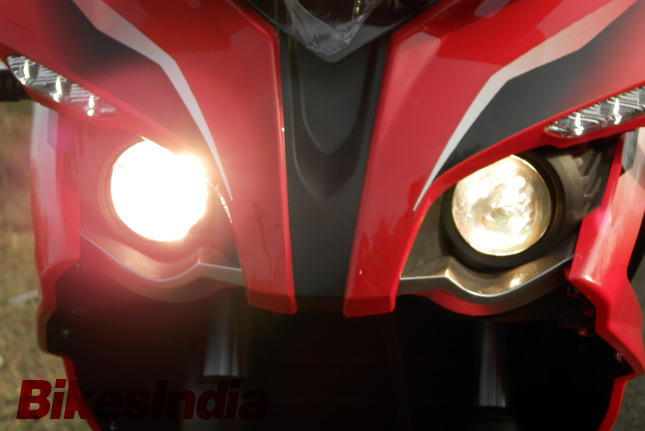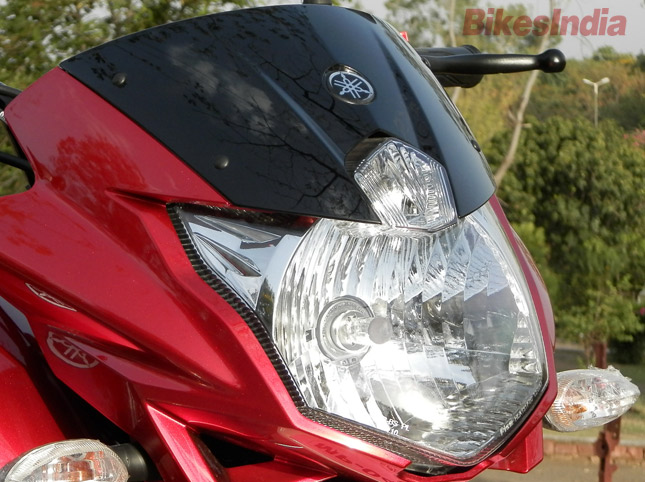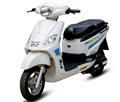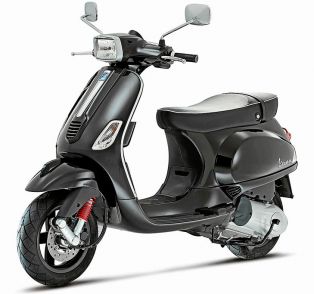Ask anyone who own a motorcycle if they are satisfied with their stock motorcycle headlight setup and only some will give you an answer yes. The rest of them will tell you ways how they plan to upgrade their headlights in one way or the other. But then the problem arises when people simply just upgrade their headlight setup without considering the fact as to how the setup should be.
This ends up in sometimes a broken bulb or a blown out fuse and at times even a blinded person travelling in the opposite direction. Nowadays though many companies are providing good quality projector headlamps on the bikes, but still this article is for those who are looking to upgrade their old headlight setup to something new and better. Types of Headlights:
Types of Headlights:
There are a total of 3 types of headlight systems as follows:
READ ALSO: Motorcycle LED Lights- Why Go The LED Way?
Now in case of reflector headlamps, the overall intensity of the light depends on the power of the bulb used in it. So a 55W will give more light than a 35W unit. Also in case you use HID instead of regular tungsten bulbs, then the intensity of light will be more, but then the overall spread of light will be high. That means the direction of the light will not be that much which will lead to higher illumination but lower penetration.
This is not the case with projector headlamps. With the projector setup, the illumination and penetration, both are high even with a HID or a tungsten filament bulb. But the cost factor of projectors is high; hence they are used only in premium bikes while reflectors are used in all the commuters and budget bikes. Coming to the bulbs used in headlights, there are 3 main types of bulbs:
Coming to the bulbs used in headlights, there are 3 main types of bulbs:
Also if you plan to upgrade your headlight, then do check out if your bike’s battery is able to handle that kind of load else you will be left with a blown fuse and the bike will cease to work completely. So in that case get your battery upgraded too. Would be safer for the new unit and the bike as well.
So make sure you take proper care while upgrading your lights and remember that basics so as to not get the configuration wrong and end up wasting money and becoming a riding hazard for others. Ride hard, ride safe and do comment below in case you have any more queries about headlights.
By: Pratik Patole
This ends up in sometimes a broken bulb or a blown out fuse and at times even a blinded person travelling in the opposite direction. Nowadays though many companies are providing good quality projector headlamps on the bikes, but still this article is for those who are looking to upgrade their old headlight setup to something new and better.
 Types of Headlights:
Types of Headlights:There are a total of 3 types of headlight systems as follows:
1. Reflector Headlamps:
These headlamps are nothing but a tungsten filament bulb inside the housing with reflective material surrounding it. The idea behind this system is to reflect as much light as possible in the forward direction, but this does not quite guarantee the directional flow and spreading of the light.
2. Projector Headlamps:
These headlamps are special purpose housing with a lens in it. There are reflectors in it as well, but the light is completely captured by the lens which provides direction to the light flow. Hence the intensity of the headlight is better and also the light is directional which means there are no chances to blind the oncoming traffic.
3. Multi-directional LEDs:
These headlamps contain high intensity LEDs bundled together to provide a directional lighting pattern and also of high illumination capability. Also they are programmable on the fly so a certain part of the light can be cut off or turned so as to not disturb the oncoming traffic and illuminate the road better. This technology is quite new and will take some time to arrive for bikes, but it is being used in cars as of now.
One might think why I did not included HID lights in here; that is because HID lights are bulbs and not a type of headlight housing. HIDs can be used in any of the projector or reflective light housings and they will do their job. We will cover them when we check out the bulbs used in headlights.These headlamps are nothing but a tungsten filament bulb inside the housing with reflective material surrounding it. The idea behind this system is to reflect as much light as possible in the forward direction, but this does not quite guarantee the directional flow and spreading of the light.
2. Projector Headlamps:
These headlamps are special purpose housing with a lens in it. There are reflectors in it as well, but the light is completely captured by the lens which provides direction to the light flow. Hence the intensity of the headlight is better and also the light is directional which means there are no chances to blind the oncoming traffic.
3. Multi-directional LEDs:
These headlamps contain high intensity LEDs bundled together to provide a directional lighting pattern and also of high illumination capability. Also they are programmable on the fly so a certain part of the light can be cut off or turned so as to not disturb the oncoming traffic and illuminate the road better. This technology is quite new and will take some time to arrive for bikes, but it is being used in cars as of now.
READ ALSO: Motorcycle LED Lights- Why Go The LED Way?
Now in case of reflector headlamps, the overall intensity of the light depends on the power of the bulb used in it. So a 55W will give more light than a 35W unit. Also in case you use HID instead of regular tungsten bulbs, then the intensity of light will be more, but then the overall spread of light will be high. That means the direction of the light will not be that much which will lead to higher illumination but lower penetration.
This is not the case with projector headlamps. With the projector setup, the illumination and penetration, both are high even with a HID or a tungsten filament bulb. But the cost factor of projectors is high; hence they are used only in premium bikes while reflectors are used in all the commuters and budget bikes.
 Coming to the bulbs used in headlights, there are 3 main types of bulbs:
Coming to the bulbs used in headlights, there are 3 main types of bulbs:1. Tungsten filament:
This is the most common type of bulb used in headlights. It works exactly like a regular bulb at home and produces light according to its wattage. It consumes quite a lot of power though and the light directional ability of the bulb is pretty less which is why the reflectors are needed to make sure light is used optimally.
2. Projector based bulbs/ Xenon bulbs:
These Xenon bulbs are used in projector setups mostly since they are made with the directional purpose as well. They are pretty bright and give out a good stream of light. If any of you head of bi-Xenon setup, you should know that it does not exactly contain two bulbs, but there is a solenoid in the projector setup which cuts off light and redirects it in other direction, hence a single bulb works as both a low beam and high beam and hence a two bulb setup is not required here.
3. HID (High Intensity Discharge):
These bulbs are specialized gas filled units which strike an electrical arc inside using tungsten rods and a translucent fused quartz or alumina salt is used which emits light or high intensity. The salt becomes plasma and that increases the light intensity. But the light that comes out of HIDs is so high, that is needs to be controlled and hence it is preferably used in conjunction with projector setups else the opposite traffic surely gets blinded.
There are some people who use HIDs with reflector setups on their bikes and those are the ones we curse with all our might. But jokes apart it is really not recommended to use HIDs solo. The reason being the intensity is too high and it is not safe for the rest of the traffic. The light not controlled is really not much use to even the user since there is a lot of wastage due to lack of direction.
READ ALSO: Importance Of Fog lights In Motorcycles And Their Working ExplainedThis is the most common type of bulb used in headlights. It works exactly like a regular bulb at home and produces light according to its wattage. It consumes quite a lot of power though and the light directional ability of the bulb is pretty less which is why the reflectors are needed to make sure light is used optimally.
2. Projector based bulbs/ Xenon bulbs:
These Xenon bulbs are used in projector setups mostly since they are made with the directional purpose as well. They are pretty bright and give out a good stream of light. If any of you head of bi-Xenon setup, you should know that it does not exactly contain two bulbs, but there is a solenoid in the projector setup which cuts off light and redirects it in other direction, hence a single bulb works as both a low beam and high beam and hence a two bulb setup is not required here.
3. HID (High Intensity Discharge):
These bulbs are specialized gas filled units which strike an electrical arc inside using tungsten rods and a translucent fused quartz or alumina salt is used which emits light or high intensity. The salt becomes plasma and that increases the light intensity. But the light that comes out of HIDs is so high, that is needs to be controlled and hence it is preferably used in conjunction with projector setups else the opposite traffic surely gets blinded.
There are some people who use HIDs with reflector setups on their bikes and those are the ones we curse with all our might. But jokes apart it is really not recommended to use HIDs solo. The reason being the intensity is too high and it is not safe for the rest of the traffic. The light not controlled is really not much use to even the user since there is a lot of wastage due to lack of direction.
Also if you plan to upgrade your headlight, then do check out if your bike’s battery is able to handle that kind of load else you will be left with a blown fuse and the bike will cease to work completely. So in that case get your battery upgraded too. Would be safer for the new unit and the bike as well.
So make sure you take proper care while upgrading your lights and remember that basics so as to not get the configuration wrong and end up wasting money and becoming a riding hazard for others. Ride hard, ride safe and do comment below in case you have any more queries about headlights.
By: Pratik Patole











